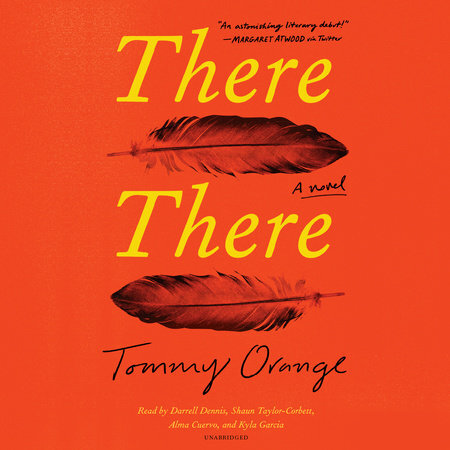Generational Trauma in There There
In There There, Tommy Orange uses various depictions of violence to show how Native Americans have been oppressed and underrepresented throughout history. These depictions have connections to the studies done regarding the effects of generational trauma on indigenous peoples. A main theme we see in There There is substance abuse and suicide to cope.
Each of the characters who face this trauma reacts differently. For example Opal Viola Victoria Bear Shield copes with her trauma by trying to disconnect. Because of her trauma, she tries to protect others from danger and can sense danger well. Opal has a more negative view on her Native American identity and feels that she does not belong. Unlike other characters, she does not try to connect much to Native American culture. When Opal was there at the powwow, she was hiding and did not want to be seen. Each character has their own way of dealing with trauma, and for Opal, she tries to disconnect. Opal has a bad relationship with her grandchildren as a result. She shields are grandchildren and does not want them to learn about Native American culture as a result of her trauma.
Jacquie Red Feather is an example of a character who faced harsh trauma. She was assaulted at a young age and turns to substance abuse to cope: “The problem that became a drinking problem started for me way before the drinking was even related to it, though it was when I first started drinking. Not that I blame my past, or don’t accept it. We’d been on Alcatraz, me and my family, back during the occupation, in 1970" (Orange 110). She ends up having to deal with her daughters' suicide as a result of this generational trauma and gives her grandchildren to Opal to take care of. Jacquie deals with the trauma differently and tries to connect to her culture. She ends up going to the powwow in Oakland, hoping to reconnect with Opal and her grandchildren.
Orvil is also another good example. He is curious to learn about his culture, but Opal refuses to answer his questions. She believes that this will only harm him. This behavior is a result of the trauma she faced. Orvil trys to learn more online and teaches himself a dance to perform at the powwow, showing the readers how far he has come. In this novel, many of the characters who faced trauma try to isolate themselves from their culture.
Other characters such as Blue and Edwin Black also try to reconnect with their culture. Blue was adopted and did not know much about her culture and identity. She knew she was Native American, but had no connection to her roots. She only learned her mother's name when she was eigthteen years old and travels to Oklahoma to learn more about her culture. Blue's identity issues are a result of generational trauma. Similarly, Edwin has a similar problem to Blue. He lives with his mother but does not know much about his father, who got shot at the powwow. Unlike Opal, Edwin also tries to learn more about his culture and meets Blue at the powwow.
Reading There There makes the readers realize how all of the 12 characters are connected in some way. They face issues figuring out their identity as a result of the generational trauma. Orvil Red Feather asks himself “What does it mean to be an Indian?” Each character copes with it in different ways, with substance abuse being a common theme, and suicide as seen with Jacquie's daughter. Orange does a good job showing how Native Americans have been marginalized throughout history, showing how the colonist perspective is prevalent.
Orange tries to show female representation in the story and positions them in between male perspectives to have diverse representation. He shows how women had a hard time assimilating in this society and the abuse they face. Orange intentionally positioned the order of the stories like this. "The female narrative perspectives occupy the third, seventh, and eleventh positions in the sequence of first appearances, creating a structural balance. Two male perspectives precede Opal’s, followed by three male perspectives that precede Jacquie’s, followed by three male perspectives that precede Blue’s, followed by two final male perspectives" (Allen 555).
"Orange’s characters are, indeed, resistant agents who defy these histories of extermination simply by “living,” connecting, and speaking. Yet they flagrantly enact and suffer more violence, much of it senseless, selfdefeating, and divisive—and long before the climactic mayhem at the book’s close. Most of all, they are aware of themselves throughout as searching, wounded shells whose identities hinge wholly on “memories we don’t remember” (Taylor 593). This quote is another example of generational trauma. The characters are aware of their identity issues and try to connect to their culture.
